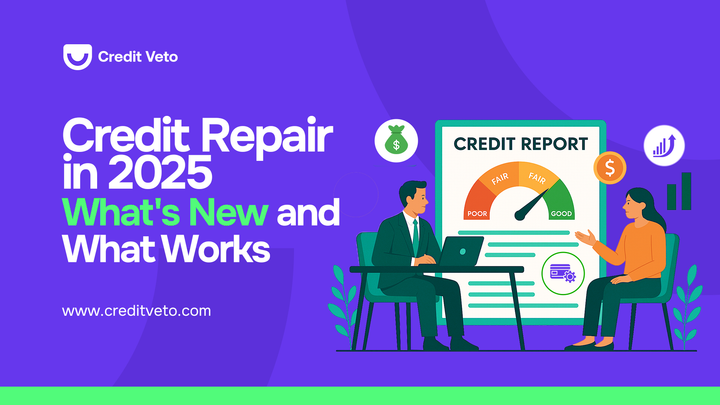How to Boost Your Credit Score Above 750 (Even If You’re at 609)
Trying to raise your score from 609 or 680 to 750? This guide breaks down 8 best tips, tricks, and real solutions to boost your credit fast.

Most people don’t realize how close they are to excellent credit. Whether your score is 609 or sitting around 690, you’re not as far off from 750 as you think. The key is knowing what to focus on and what to stop doing.
Your credit score doesn’t just determine if you get approved. It affects your interest rates, loan terms, and even your job opportunities. A 750 score puts you in the sweet spot where lenders trust you more, and you pay less.
In this guide, we’ll break down what’s holding your score back and how to fix it, step by step.
Why 750 Matters More Than You Think
Most lenders see a score above 750 as “excellent.” It’s not just about bragging rights. At this level, you get access to the best credit cards, lower mortgage interest rates, and higher approval odds.
People with a 680 credit score often ask, “Is this good enough?” It’s not bad, but it’s average. A 653 credit score or 615 credit score means you might get approved, but probably not at favorable rates.
If you’re stuck at a 609 credit score, the good news is you can still turn it around. And faster than you think, if you follow the right strategy.
Common Starting Points: Where Are You Now?
Everyone starts somewhere. And no matter your current score, there’s a path forward—it just depends on what you’re working with. Let’s look at where you might be right now and what your next move should be.
If Your Credit Score is 609 or 615:
This is considered a lower tier, often labeled “fair” or “poor.” It doesn’t mean you’re out of the game, but it does mean lenders may see you as high risk. At this stage, your top priority should be addressing what’s dragging your score down.
This usually includes past delinquencies, missed payments, or unpaid collections. Start by pulling your credit report from all three bureaus and go line by line. If something doesn’t look right, dispute it immediately. Even one inaccurate negative mark can weigh heavily on a 609 credit score.
You also want to make sure you’re not adding new debt to the pile. Credit Veto’s tools can help you identify the errors and guide you through fixing them step by step.
If You Have Around 653 Credit Score:
A 653 credit score puts you in a better position than 609, but it’s still in the “fair” zone. This is a critical stage where you’re just a few smart moves away from breaking into the 700s, but it can go either way depending on what you do next.
At this point, your focus should be on paying down credit card balances and avoiding new debt. This is also the time to start building positive credit activity. Make small charges on your card, then pay them off quickly. Set reminders so you never miss a due date. And avoid applying for too many new accounts, which could trigger hard inquiries and lower your score again.
If You Have is 680 or 690 Credit Score:
Now you’re in good territory, but not quite at the top. These scores are often seen as “average to good.” People at this stage often ask, “Is 680 a good credit score?” It is; but it’s not yet excellent.
This is when you shift from fixing to fine-tuning. Check your credit utilization and keep it below 10% if possible. Review your report for any old, incorrect information that could be deleted. Make sure you’re keeping your oldest accounts open and in good standing.
You don’t need a big overhaul here, just steady maintenance. A few more months of perfect payments, smart credit usage, and possibly adding a low-risk tradeline could be the push that gets you from a 690 credit score to 750 and beyond.
Wherever you’re starting, the key is clarity. Knowing your score is one thing. Knowing what to do about it is what moves you forward. And that’s where real progress starts.
1. Check for Errors First
Start by reviewing your credit report from all three bureaus—Experian, Equifax, and TransUnion. You can get these reports free from AnnualCreditReport.com.
Look for:
- Wrong balances
- Accounts you didn’t open
- Outdated personal information
- Duplicate debts
If you spot errors, file a dispute. A simple correction can sometimes boost your score by 20 to 50 points.
2. Bring Down Your Credit Card Balances
Your credit utilization rate is how much credit you use compared to what’s available. If you’re using more than 30% of your available limit, your score takes a hit.
Let’s say you have a $1,000 credit limit and you’ve used $800. That’s 80% utilization—too high. Paying it down to $300 or less makes a real difference. Even with a 690 credit score, reducing your card balances can help you jump over 700 quickly.
3. Don’t Close Old Accounts
Old credit cards help your credit age. The longer your credit history, the better it looks. Many people with a 680 credit score make the mistake of closing accounts once they’re paid off. Don’t do that, especially if they don’t have annual fees.
Instead, use the card occasionally and pay it off. This keeps the account active and helps your score.
4. Pay Everything On Time, Every Time
One late payment can drag your score down, especially if you’re already at a 609 or 615 credit score. Payment history makes up the biggest part of your credit score.
Set up automatic payments or reminders. Even paying the minimum on time is better than missing a due date.
If you’re rebuilding from a 609 credit score, six months of on-time payments can make a major difference.
5. Add a Tradeline (The Right Way)
Buying tradelines to boost credit has become a trend, but it’s not one-size-fits-all. A tradeline is basically someone adding you as an authorized user to their credit card. If the card has a good history and low utilization, you benefit.
Be careful though. Not all tradelines are trustworthy. Stick with reputable companies and make sure the cardholder has a strong history. For people with a 653 credit score or lower, this can be a smart short-term boost,if done right.
6. Mix Up Your Credit Types
A healthy mix of credit cards, auto loans, and installment loans shows lenders you can handle different kinds of debt. If you’ve only ever had a credit card, consider adding a small credit-builder loan or a secured loan from your bank.
This is especially useful if you’re hovering around a 680 credit score and need that final push past 700.
7. Keep Hard Inquiries Low
Every time you apply for credit, it can drop your score slightly. These are known as hard inquiries. One or two in a year is fine. But too many in a short time can make you look risky.
Space out your applications and only apply for credit when necessary. Even small things like store cards can trigger a hard pull.
8. Set Goals and Track Progress
If your current score is 609, aim for 650 first. Then 700. Break it into stages. Use free credit monitoring tools to stay on track. At Credit Veto, we provide simple tools to track your progress, review your report, and get insights you can actually use.
You don’t need to overthink it; just commit to one change per month and build from there.
Real Talk: Is 680 a Good Credit Score?
It’s okay. You can get approved for things. But you’re not getting the best deals. Most people with a 680 credit score or even a 690 credit score are close. They just need to fix one or two habits.
Think of 680 as “almost there” and 750 as “where the smart money lives.”
Final Thoughts
Raising your score from a 609 credit score to over 750 is not a dream. It’s a clear plan that just needs consistency.
Check your reports. Pay your bills on time. Keep your balances low. Consider using tradelines with caution. And don’t rush; credit growth is a marathon, not a sprint.
Credit Veto is here to help. We provide expert guidance, credit dispute support, and tools that make your journey simple. Whether you’re starting at 653, 609, or even 680, your next credit win is closer than you think. Sign up today and start the journey to your excellent credit score.




Comments ()